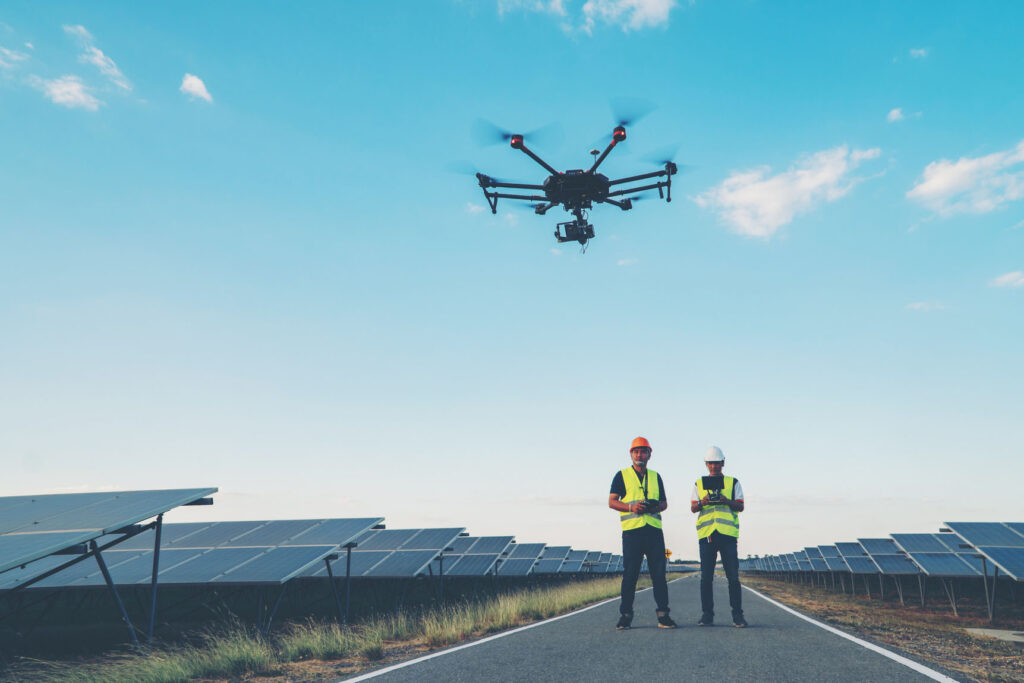Solar asset owners and operators may already know about the benefits of electroluminescence (EL) testing. EL is an imaging technique for evaluating PV module health, diagnosing solar plant underperformance, and assessing the damage caused by force majeure events.
EL relies on the same principle as a light emitting diode (LED). Current is injected into a solar module, which causes light emission in the near-infrared spectrum, and the EL image captures that emitted light. The amount of light that radiates from each region of the module is proportional to its voltage potential, so inactive regions appear dark on EL images.
EL images reveal the full extent of damage to PV modules – even when the damage cannot be seen by eye or with traditional thermal/infrared imaging and the anticipated energy loss is not yet realized.
Issues detected through EL include:
- Cell cracks
- Manufacturing defects
- Shipping and handling damage
- Installation damage
- Impacts from extreme weather events (hail, tornados, hurricane)
- Heat stress following fire events
- Potential-induced degradation (PID)
- Light- and elevated temperature-induced degradation (LETID)
- Cell mismatch
- Corrosion
- Other possible causes of underperformance
In 2022, PVEL and QE-Labs launched the first drone-based EL service in North America, allowing asset owners a faster and more comprehensive way to scan their sites for potential issues. The first-of-its-kind technology can revolutionize the way asset managers can conduct on-going operations and maintenance, as well as catastrophic storm response.
But is it right for your project? Read on to learn more.

Why Use a Drone?
With the use of a specialized drone camera system, field technicians can scan larger quantities of PV modules compared to traditional methods.
PVEL’s drone EL imaging process has three key advantages:
- Faster and More Cost Effective – Up to 10x faster with up to 50% less cost, as compared to traditional EL sampling methods.
- Proven Quality and Reliability – Drone EL images have comparable resolution to ground-based field EL images.
- Innovative – PVEL’s drone EL solution uses exclusive hardware and software solutions to swiftly acquire and process thousands of EL images.
What is the process?
First, PVEL will work with you to choose the appropriate testing approach based on your objectives. If drone EL is deemed to be the best solution for your needs, PVEL’s team will then use the site’s as-built drawings to create the most efficient flight plan, and our licensed drone operator will obtain all necessary permits.
When onsite, PVEL will fly the drone at night to capture EL video of all of the modules to be imaged. During this process the strings being imaged will be powered by generator and switched on and off using PVEL’s proprietary hardware.
After the flight, the acquired video is automatically parsed into separate high-resolution EL images for each module, which will then be analyzed for cell cracks and other EL anomalies via machine learning. PVEL then provides a report with these results to help you troubleshoot and address issues quickly.
When is it best to use Drone EL over other methods?
Save time and money with drone EL if you need assistance with:
- Troubleshooting underperformance
- Due diligence when acquiring existing sites
- Warranty / insurance claims, particularly following extreme weather events
Does My Site Qualify?
Drone EL imaging can work for any solar site, though it’s recommended for larger sites where comprehensive imaging of thousands of modules is necessary. Furthermore, drone EL is the best solution for scanning projects quickly: with drone EL, you can image in one week what would traditionally take a month or more to EL image on foot!
How can I learn more?
Download our drone EL brochure for more information or get in touch with us at info@pvel.com.